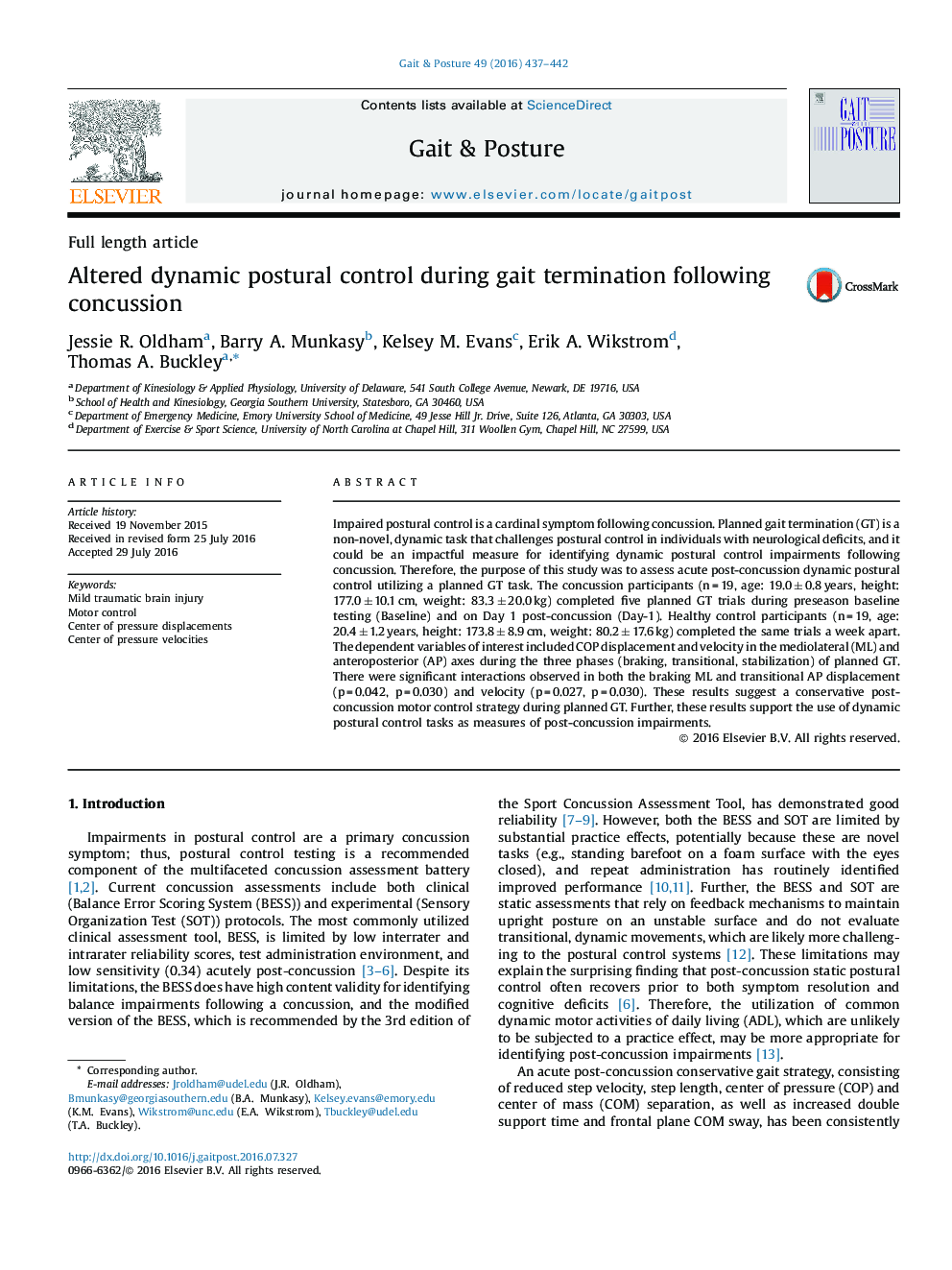| Article ID | Journal | Published Year | Pages | File Type |
|---|---|---|---|---|
| 6205516 | Gait & Posture | 2016 | 6 Pages |
â¢Dynamic postural tasks can identify impairments post-concussion better than static.â¢Concussion acutely alters motor control strategy during planned GT.â¢COP displacements were altered during planned GT in concussed individuals.â¢COP velocities were altered during planned GT acutely post-concussion.â¢Planned GT is an effective tool for analyzing postural control post-concussion.
Impaired postural control is a cardinal symptom following concussion. Planned gait termination (GT) is a non-novel, dynamic task that challenges postural control in individuals with neurological deficits, and it could be an impactful measure for identifying dynamic postural control impairments following concussion. Therefore, the purpose of this study was to assess acute post-concussion dynamic postural control utilizing a planned GT task. The concussion participants (n = 19, age: 19.0 ± 0.8 years, height: 177.0 ± 10.1 cm, weight: 83.3 ± 20.0 kg) completed five planned GT trials during preseason baseline testing (Baseline) and on Day 1 post-concussion (Day-1). Healthy control participants (n = 19, age: 20.4 ± 1.2 years, height: 173.8 ± 8.9 cm, weight: 80.2 ± 17.6 kg) completed the same trials a week apart. The dependent variables of interest included COP displacement and velocity in the mediolateral (ML) and anteroposterior (AP) axes during the three phases (braking, transitional, stabilization) of planned GT. There were significant interactions observed in both the braking ML and transitional AP displacement (p = 0.042, p = 0.030) and velocity (p = 0.027, p = 0.030). These results suggest a conservative post-concussion motor control strategy during planned GT. Further, these results support the use of dynamic postural control tasks as measures of post-concussion impairments.
